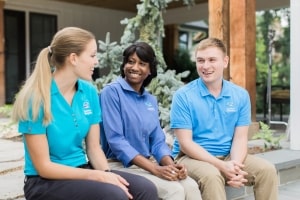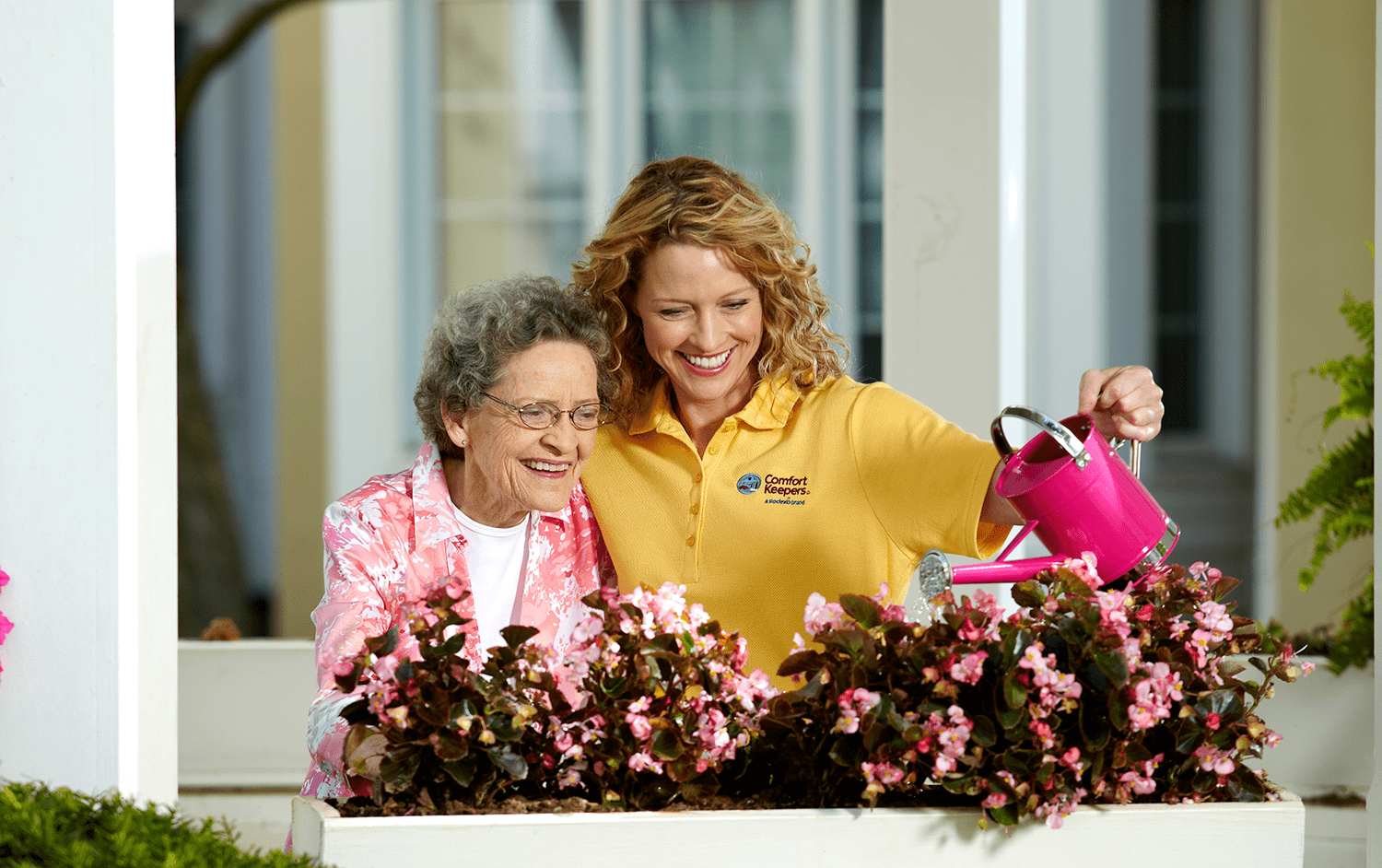Safe Snow Removal for Seniors
Preventative Care | November 18, 2021
Safe Snow Removal for Seniors: Find help, or follow best-practices
Safe Snow Removal for Seniors: When the snow falls and accumulates, emergency room professionals can be assured of one thing – it’s likely they will see an increased incidence of injuries related to snow removal. The injuries run the gamut in severity and can range from strained backs and broken bones, to serious cuts and even fatal heart attacks.
According to the 2009 U.S. Consumer Product Safety Commission, about 16,500 people in the U.S. were treated in hospital emergency rooms for injuries sustained when trying to remove snow.
Many people, especially seniors, can underestimate the time, strength and stamina it takes to shovel snow. But in many municipalities, it is a homeowner’s responsibility to clear snow from sidewalks on his or her property, so seniors often feel compelled to take steps to shovel the snow. Moreover, if an emergency vehicle needs to access a house and the snow is not cleared, it could cause a significant delay in necessary treatment. Experts recommend that seniors and others who may have physical challenges find help removing snow from sidewalks, driveways and entryways.
Here are ways to find a qualified individual or company to shovel snow:
- Call the Better Business Bureau or visit its website for reviews of qualified professional snow removal services.
- Ask neighbors if they can recommend a neighborhood teen who will shovel snow for a fee.
- Call a local church. Some churches have volunteers who help with snow removal for shut-ins.
- Call the local city or town administration office. Local government offices may have special programs.
Related Article: Reducing the Risk of Pneumonia in Seniors
Seniors, and others with physical challenges, should never remove snow manually without a doctor’s approval. Reviewing safety tips before the first snowflake falls can prevent both minor and serious snow-removal injuries.
Considerations for Safe Snow Removal for Seniors :
Snow shoveling – Even for those who exercise regularly, shoveling snow is rigorous, physical work. According to the American Academy of Orthopaedic Surgeons, shoveling is considered an intense activity that raises one’s blood pressure and heart rate.
Snow Shovel Best Practices for seniors – and others:
- Dress appropriately. Wearing layers will allow for adjustment to the temperature outside. Be sure to dress warmly enough and cover the head, face and hands when outside for prolonged periods of time.
- Pick the right waterproof boots. Protect feet from the cold and keep them dry with waterproof boots. Non-skid boots help guard against falls on slick snow or hidden ice.
- Pick a small shovel. Depending on how wet the snow is – a shovel full of snow can weigh up to 15 pounds! Selecting a smaller shovel means lighter loads of snow, which can help prevent injury to the body by creating less strain.
- Stay hydrated. Water plays an important role when people exercise in the summer or winter. Having a water bottle handy just inside the garage and taking a few sips after every 15 minutes of shoveling snow will help guard against dehydration.
- Shovel frequently. If a big storm is forecasted, go outside and shovel every time the snowfall is about 2 inches. This will help lessen the load and make snow shoveling more manageable.
- Set a time limit. Shoveling snow is a hard work, so take a break after 20 – 30 minutes of shoveling and resume after having rested.
- Lift with the legs, not the back. The legs have very strong muscle groups so make sure the legs carry the brunt of the lifting. Bend and straighten the knees when shoveling and make sure the back is not bending.
- Push the snow. It’s easier to push the shovel full of snow instead of lifting and throwing the snow.
- Separate the hands on the shovel. Creating space between your hands can increase leverage on the shovel to make it easier.
- Avoid caffeine and nicotine before shoveling. Caffeine and nicotine act as stimulants to our bodies by increasing the heart rate and constricting blood vessels, which puts more strain on the heart.
- Never shovel alone. Let a spouse or neighbor know you will be shoveling. That way, if a person does get into trouble someone will be looking out and can call for help quickly.
Roof Snow and Ice Removal – An ice dam can form when water from melting snow re-freezes at the edge of a roofline. If it grows large enough, an ice dam prevents water from draining off the roof. If water backs up underneath the roof shingles, it’s likely to make its way inside.
Tips to avoid ice dams on roofs:
- Ensure areas around downspouts are clear so gutters drain properly.
- Ensure the attic is well insulated. Before winter arrives, seal areas that can cause trouble such as vent pipes, exhaust fans, chimneys, attic hatches and light fixtures
- Install a water-repellant membrane underneath roof shingles.
Utilizing Snow Removal Equipment – Many people who live in climates that get a lot of snow rely on machines such as snow blowers to remove snow. While these machines are useful and efficient, they can be dangerous.
Critical tips to remember for those who use snow removal equipment:
- Test it before winter. Check all moving parts, and refer to the owner’s manual for ongoing maintenance requirements. Note all the safety features and use them 100% of the time.
- Ensure the snow blower never runs unattended, even for a short time.
- Beware of any motor or blade recoil that occurs when the machine is turned on or off.
- NEVER reach inside a snow blower to clear a clog. Stop the machine and wait at least 5 seconds.
- Beware of the power cord so it does not present a tripping hazard.
- Don’t rush, it will overload a snow removal machine.
- Don’t use a snow blower on slopes, and be careful of tree roots and similar potential hazards.
- Don’t run gasoline-powered equipment indoors to avoid dangerous carbon monoxide exposure.
Comfort Keepers® Can Help
Comfort Keepers can help. Our caregivers can provide wellness support, remind clients to take medication, provide transportation to scheduled appointments, and support physician-prescribed exercise regimens and diets. Our Interactive Caregiving™ engages clients physically, emotionally, mentally and socially ─ and provides a system of care that addresses safety, nutrition, mind, body, and activities of daily living (ADLs). As part of an individualized care plan, caregivers can let a senior’s care team know if there are changes in behavior or physical characteristics. Our goal is to see that clients have the means to find the joy and happiness in each day, regardless of age or acuity.
To learn more about our in-home care services, contact your Orangeville Comfort Keepers location today.
Bonus Article: In-Home Care
References
Balle, L. Snow Removal Solutions for the Elderly & Disabled. (n.d.). Retreived December 23, 2013, from http://www.ehow.com/list_6105769_snow-solutions-elderly-_amp_-disabled.html
Ice Dam Tips and Information. (n.d.). Traveler’s Insurance. Retrieved December 15, 2013, from http://www.travelers.com/prepare-prevent/mother-nature/winter-storm-safety/ice-dam-removal.aspx
Prevent Snow Shoveling and Snowblowing Injuries. (n.d.). OrthoInfo. Retrieved December 15, 2013, from http://orthoinfo.aaos.org/topic.cfm?topic=A00060
Skerrett, Patrick J. Shoveling Snow Can Be Hard on the Heart. (2013, February 8). Harvard Health Publications. Retrieved December 15, from http://www.health.harvard.edu/blog/shoveling-snow-can-be-hard-on-the-heart-201302085868
Snow Removal Services/Help for Seniors/Elderly Senior Care/Find Senior Care in Your Area. Retrieved December 23, 2013, from http://www.gericarefinder.com/products_services/home_maint_repair_exterior/snow_removal/
Snow Removal Tips to Keep you and Your Back Safe. (n.d.). HomeAdvisor Articles & Advice. Retrieved December 15, 2013, from http://www.homeadvisor.com/article.show.Snow-Removal-Tips-to-Keep-You-and-Your-Back-Safe.11425.html
Snow Removal: Winter weather brings new hazards, especially in snow and ice removal. (n.d.). Tailgate Tool-box Talks. Retrieved December 15, 2013, from http://www.safetytoolboxtopics.com/Weather/snow-removal.html
Individualized Home Care Options
Long-Term Home Care, 24 Hour Home Care & Short Term Care Options Customized for You







